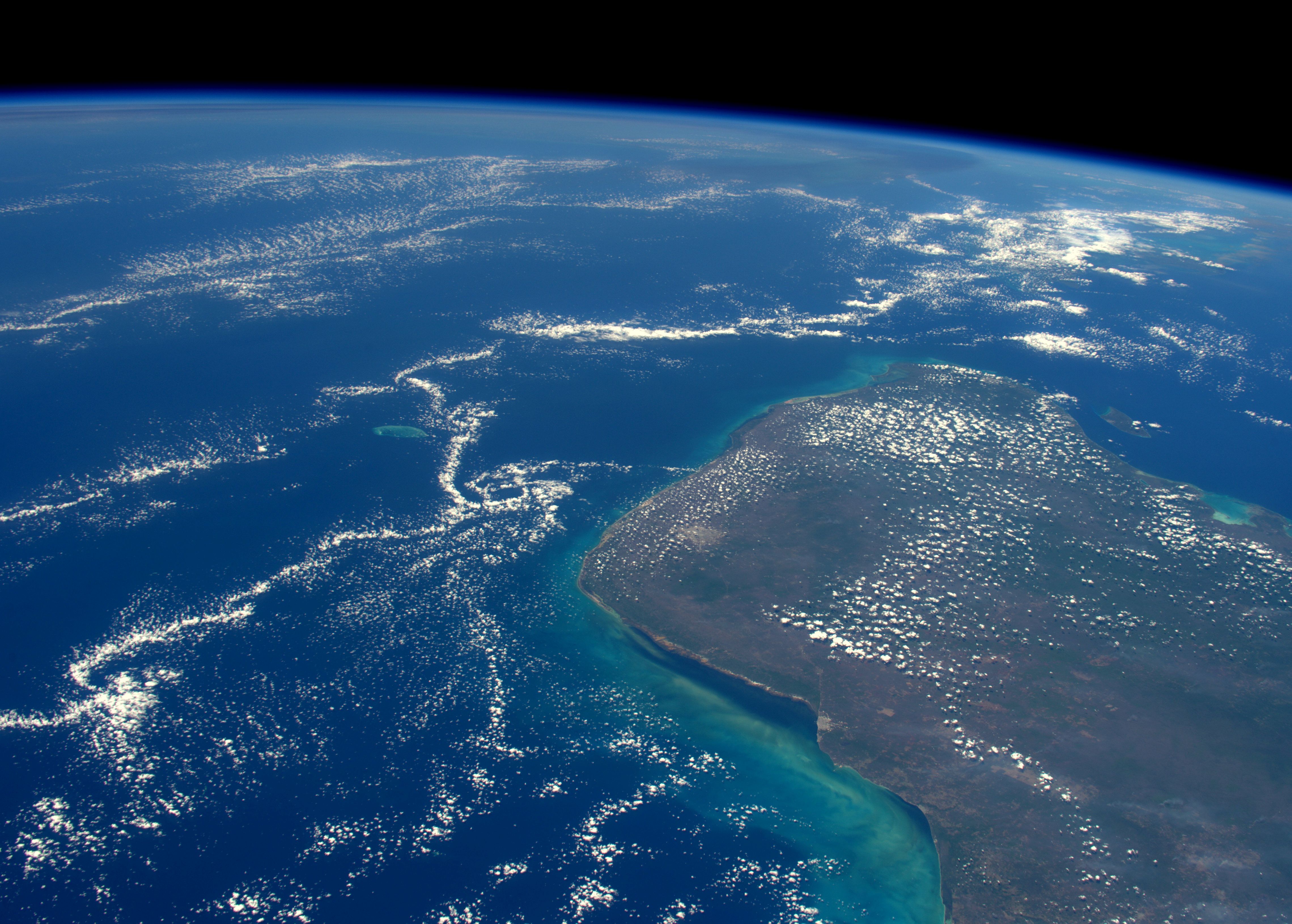A big-time asteroid impact in an already-cold climate is one way to create a snowball Earth.

A rendering of a Snowball Earth. Credit: NASA
Scientists think Earth may have undergone at least two extreme freeze events throughout its history, becoming a so-called “snowball Earth” with a surface covered by ice.
What triggered these events is not fully understood, but new research published Feb. 9 in Science Advances suggests a substantial asteroid impact in an already-cold climate (such as that during an ice age) is one possibility for turning Earth into a snowball.
Using computer models, the researchers looked at an asteroid strike comparable to the Chicxulub impact on the Yucatán Peninsula some 66 million years ago. That event is thought to have led to the Cretaceous-Paleogene extinction event that wiped out much of the animal and plant life on our planet.
The researchers simulated the impact occurring during four different climates. They found that in the two scenarios modeling the asteroid strike during colder conditions, the impact could have triggered a snowball Earth event.
The simulations showed the freeze events did not happen in eras where Earth’s climate was warmer – for example, during the Cretaceous Period.
Chicxulub’s Impact

Still, if an asteroid comparable to the one that hit the Yucatán Peninsula were to hit again, a snowball Earth would be the least of our worries.
That asteroid sped toward Earth at an estimated 12.5 miles per second (20 kilometers per second) and crashed into Mexico’s Yucatán Peninsula.
Upon impact, rocks melted and water vaporized. Within a few minutes, the collision infused Earth’s atmosphere with several hundred billion tons of carbon dioxide, sulfur dioxide, and water vapor, which blocked the sunlight for decades.
Thankfully, there are currently no known threats of this magnitude to Earth from asteroids. NASA and others keep eyes on the sky for near-Earth objects (NEOs). NASA’s Center for Near Earth Object Studies tracks and detects asteroids and comets with telescopes on the ground and in space, while NASA and other space agencies are also working toward developing ways to protect the Earth against an impact.
You can see a running tally of NEOs, comets, and minor planets spotted here, on the International Astronomical Union’s Minor Planet Center.

